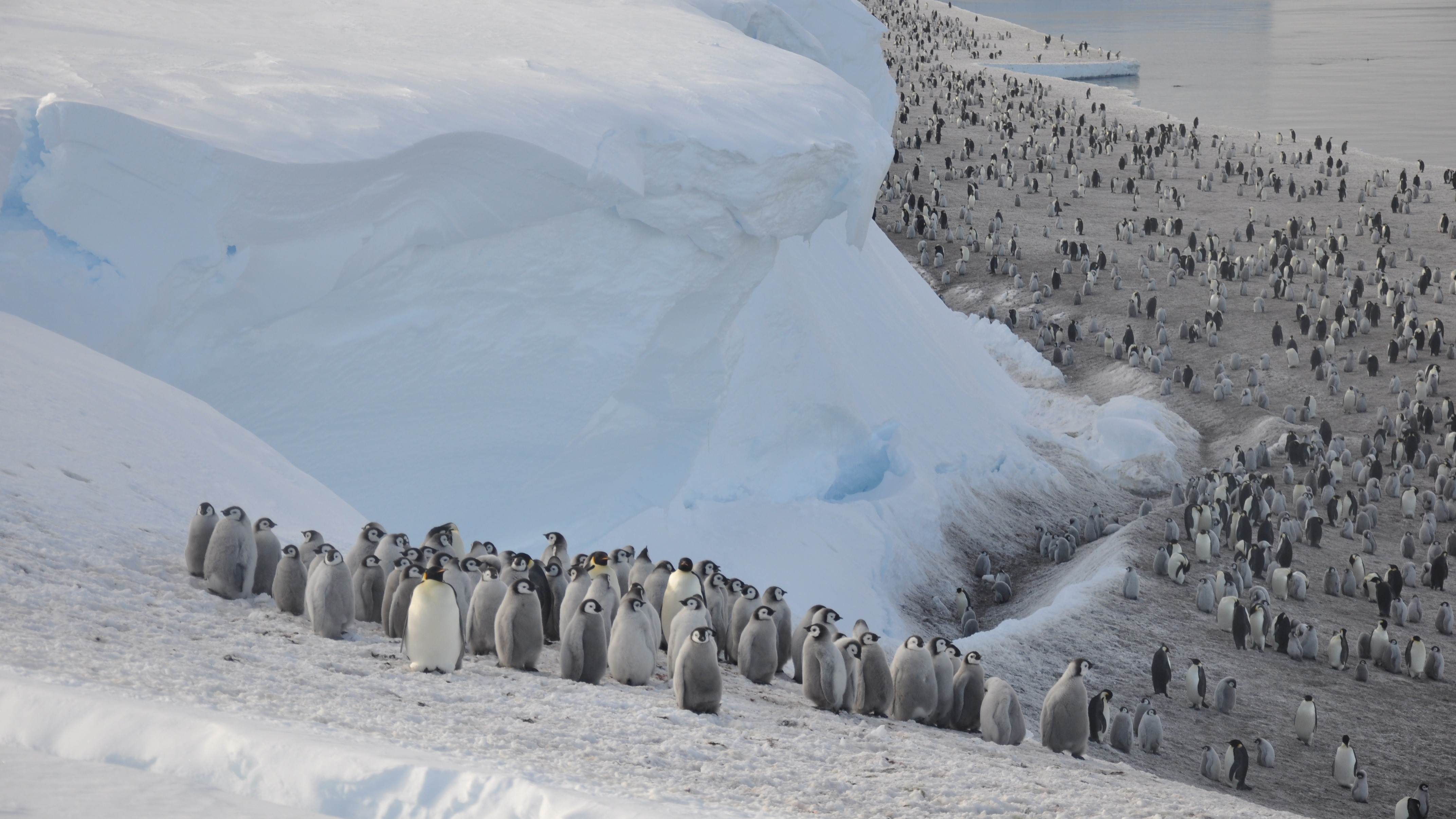Hundreds of emperor penguin chicks spotted plunging off a 50-foot cliff in 1st-of-its-kind footage
The fledglings are typically reared on floating platforms of sea ice, but an unprecedented decline in the ice extent has driven young onto cliffs.

Emperor penguin chicks have been recorded hurling themselves from a 50-foot (15 meters) cliff in Antarctica for the first time.
The "unprecedented" footage, captured at Atka Bay in Northern Antarctica, shows roughly 700 fledglings braving a sheer drop to embark on their first swim in the ocean below.
"I had no idea that the chicks would be able to make such a giant leap, and not just survive but happily swim off together into the Southern Ocean," Bertie Gregory, the filmmaker who captured the footage for National Geographic, said in the video. "How's that for your first swimming lesson?"

Antarctica's sea ice has been declining since 2016. What does that mean for Earth's climate?
Read more:
—Collapse of the West Antarctic ice sheet is 'unavoidable,' study finds
Though it has been observed by scientists before, the behavior is unusual. The clip was filmed for National Geographic's miniseries "Secrets of the Penguins."
Typically, Emperor penguins (Aptenodytes forsteri) rear their young on free floating platforms of sea ice that blow from the ice shelf before slowly melting every year. When Emperor penguin fledglings reach the age of 5 months old, they lose their baby feathers and enter the water from a distance of roughly one or two feet (0.3 to 0.6 m).
But a recent and unprecedented decline in this ice has led scientists to theorize that it could be forcing the penguins to move onto the cliffs. The young penguins, motivated by hunger, must now make the dangerous plunge into the water to feed.
Get the world’s most fascinating discoveries delivered straight to your inbox.
To capture the fledglings' stunning leap of faith, the researchers used a camera drone that let them film the rare behavior from the air without disturbing the penguins.
Until recently, Antarctic sea ice fluctuated between relatively stable summer minimums and winter maximums. But following a record minimum in 2016, things began to shift. Two record lows soon followed, including the smallest minimum ever in February 2023 at just 737,000 square miles (1.91 million square kilometers). As winter began in March 2023, the continent was missing a chunk of ice bigger than Western Europe.
"As a research community, we've struggled to even describe how unusual the change is. People throw around words like 'unprecedented' or 'gobsmacked' or 'unbelievable'," Edward Doddridge, a polar researcher who works on climate models for the region, told Live Science. "For a while we were trying to use statistics to say that it was a one in many thousands or millions of years event; then we got into billions and even into tens of billions of years," he added. "At some point along the way, you just have to realize that the statistics aren't useful to understand this anymore."
The decline in the ice has already had a profound effect on the region's penguins. Thousands of Emperor penguin chicks were found dead in West Antarctica in 2022, with scientists expecting to find even more deaths from 2023.
"Secrets of the Penguins" will premiere on National Geographic next year.
For more amazing Earth Month content, check out the ourHOME collection on Disney+. Learn more about the historic penguin leap at NatGeo.com.

Ben Turner is a U.K. based writer and editor at Live Science. He covers physics and astronomy, tech and climate change. He graduated from University College London with a degree in particle physics before training as a journalist. When he's not writing, Ben enjoys reading literature, playing the guitar and embarrassing himself with chess.


